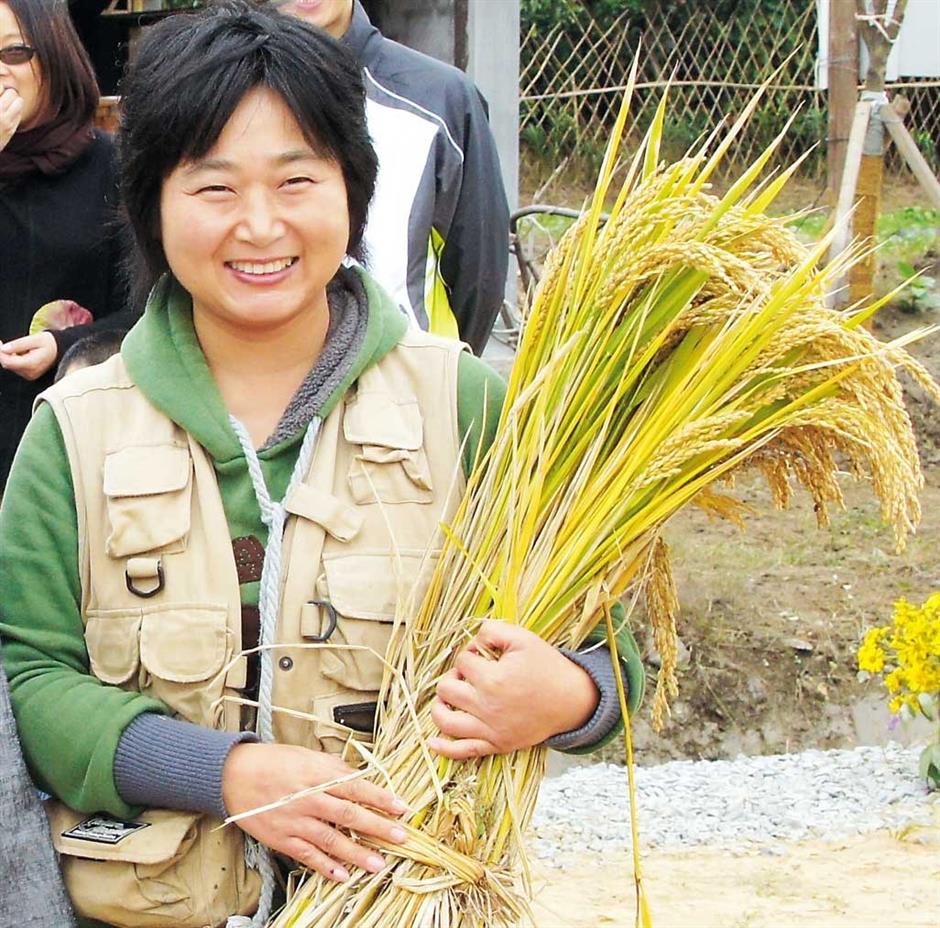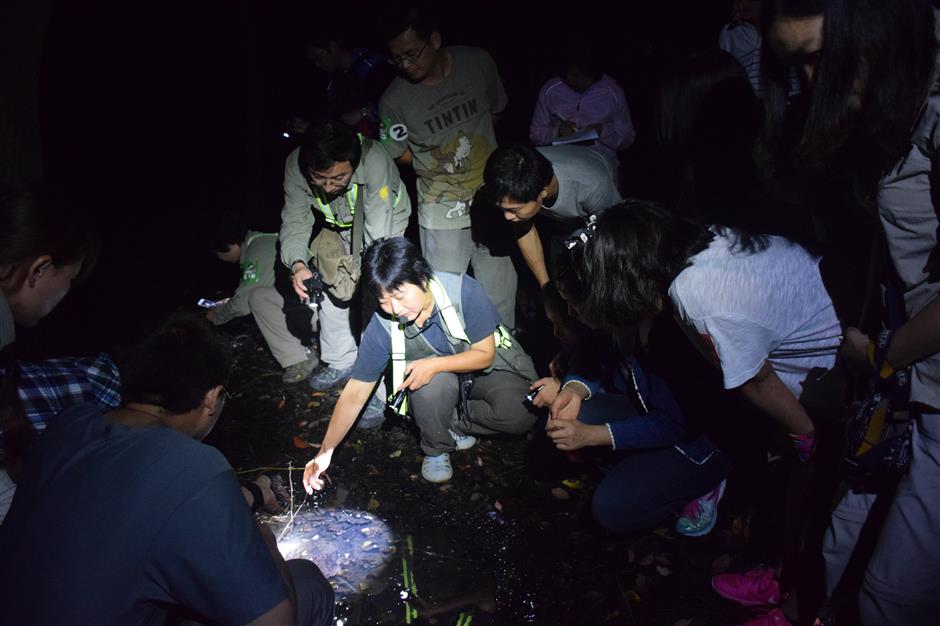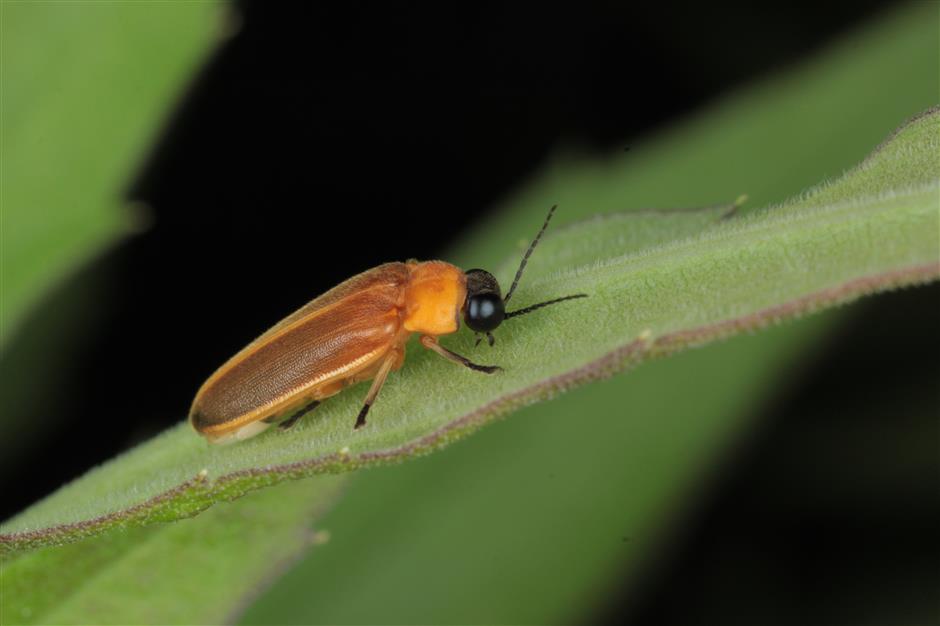Reclaiming the great outdoors on a farm
During the hot and humid summer, the city is alive with the loud chirping of cicadas, but the croaking of frogs is rare.
Children who grow up in an urban environment find it hard to take their fingers off their smartphones or tablets to observe wildlife, plants and learn about farming. Not only are these activities hard to come by in a city like Shanghai, but the importance of learning about them is often downplayed.
But slowly, change is on the rise, said Kang Hongli, who has been running eco-friendly and sustainable farms in Cenbo village, Qingpu District for seven years and hosts agriculture and nature related education programs for both children and adults.
“Agriculture is the one thing people cannot give up in the nature, because that’s where food comes from. Many parents wish that their children can learn about that, and how they are connected to the environment,” Kang said.

Kang Hongli runs an eco farm in Cenbo Village.
Kang used to work in corporations in Shanghai city before she moved to Cenbo as a “new villager.” Her love for the nature and a more relaxed, rural lifestyle drove her.
“I watched how this village has evolved over the years. Only three to four new villagers moved here in the beginning; now we have more than 40 families living in Cenbo,” she said.
New villagers like Kang who used to live in downtown Shanghai come from different backgrounds and professions but have all taken on agriculture and farming.
Kang now manages about two acres of vegetables and delivers them to her members every week.
The agriculture related classes she designed for children include observing plants and animals on the farm, planting or harvesting, and finishing tasks that provide answers to questions. For adults, she hosts lectures on the relationship between agriculture and the environment.
“My initial idea was to explore ecological agriculture and to teach more people that only good ecological environment, biological diversity and healthy soil can produce quality farm products,” Kang explained.
When Kang first start managing farms, she invited a 68-year-old farmer Bao to help plant rice. She insisted on not using any pesticides, chemical fertilizers and herbicides. Bao was worried that they might end up without produce.
“He has been farming since a very young age, and I asked him if they used such a large amount of pesticides 50 years ago. He said no, because back then there weren’t this many pests,” Kang recalled. “He was right, because after decades of abusing pesticides, the ecological balance was destroyed, and the number of predators like frogs and dragonflies significantly decreased, thus there were more pests.”
After several years of growing produce without chemicals, Kang’s field is now home to different species of frogs, insects and fireflies.
High productivity and output
“Qingpu is the lowest-lying area in Shanghai and I also want to experiment with wetland agriculture, creating ecological kennels throughout my field so the number of fireflies and frogs can continue to grow. Adult visitors may also enjoy catching mud fish or rice field eel to remind them of their childhood,” Kang said.
But modernization can’t be stopped, even in Cenbo village. Some of the traditional houses with white walls and black roof tiles are being replaced by more modern ones.
“Though Cenbo is an ecologic village, everyone who’s committed to the eco-friendly lifestyle does so on a voluntary basis, so there’s also no overall planning,” said Kang.
Cenbo village is considered one of the best places in Shanghai to go on night safaris to observe fireflies in summer, as well as birds, frogs and even hedgehogs.
The small, ornate narrow-mouthed frog is common here as are rice field frog and the eastern golden frogs.
“Frogs are an important indicator of beneficial organisms in farm fields. In the last few years the frog population has recovered quite well in Cenbo, you can learn a lot by observing them,” Kang explained. “You can come to Cenbo to see frogs from April to June every year when they are breeding and are most active. Tadpoles of toads can be seen in March and April while other species of frogs can be found from April to August.”

A night safari in Cenbo Village looking for wildlife
Cenbo village has two species of fireflies, a terrestrial species called yellow Neuroptera firefly and an aquatic species known as Japanese firefly.
About a dozen families in the village keep bees to harvest honey.
“Bees play an important role because they pollinate plants. I introduced two colonies from a mountain region in Zhejiang Province and now they’ve divided into more. Unlike the European honey bees that prefer seas of flowers, the eastern honey bees are willing to pollinate for the scattered small wild flowers,” she said.
Visitors can also see different species of birds in Cenbo. Swallows build nests under the roofs and are currently breeding here.
Japanese firefly (luciola substriata)

The larvae of this aquatic firefly species inhabits ponds or lakes. The adults’ body is yellow except the head and the end of the elytra, which are black in ventral view.
The organs of the adults are white. The males have two luminescent organs while the females only possess one in rectangular shape. The peak of the courtship flashing activity is reached one hour after sunset.
The eggs of the Japanese firefly are elliptic and yellow in color.
Ornate narrow-mouthed frog (microhyla ornata)

This species of microhylid frog is very small with a typical arrow-shaped mark on the dorsal side of the body. The ornate narrow-mouthed frogs are generally yellowish with a dark brown patch, and they have neither teeth nor discernible tympani.
These frogs are often found in grasslands, forests and shrubs. They make different sounds which resemble the chirping of birds.
















